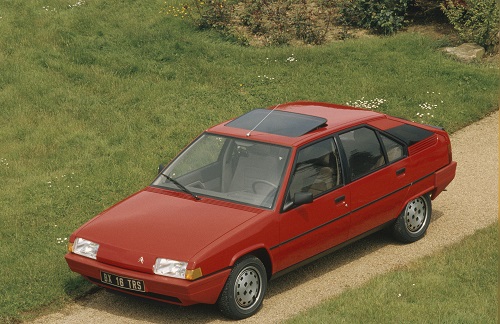On September 23, 1982, Citron unveiled its iconic BX model, marking its 40th anniversary.
Initially unveiled at the Eiffel Tower, the BX went on sale a week later at the 69th Paris Motor Show and enjoyed great success for 12 years.
To mark the occasion, the experts at the L’Aventure Citroën association are inviting enthusiasts to rediscover BX on Saturday 24 September at the Citroën Conservatory in Aulnay-sous-Bois.
Launched in 1978 under the codename “XB”, the Citroën BX project set out to create a modern, unconventional vehicle with an emphasis on innovation. BX was to be a transverse-engine vehicle, lightweight to ensure good acceleration and low fuel consumption to help with cost savings. Like all top-of-the-range Citroën cars of this era, the 5-door hatchback BX was fitted with a hydropneumatic suspension system to ensure comfort and impeccable road holding.
The first vehicle of the PSA era, BX was developed with the help of CAD (computer-aided design), state-of-the-art technology at the time, to help to perfect the design and dynamism of the car. Engines were taken from PSA group’s bank of powertrains, with powerful engines from its earliest release (62 bhp and 72 bhp 1360 cc, 90 bhp 1580 cc).
BX saw Citroën enter the upper-middle-class vehicle market. It aimed to become the GSA’s successor with serious technical credentials to guarantee comfort, dynamism and economy of use, as well as a new shape with a breakthrough design.
Citroën approached the famous Italian coachbuilder Bertone to design BX. The designer Marcello Gandini then proposed an original shape that stood out in the automotive landscape of the time. The cockpit was also striking, with a CX-inspired dashboard featuring characteristic equipment such as satellite controls on either side of the steering wheel and the backlit tachometer.
Resolutely modern and packed with appealing features, BX instantly convinced the press, seduced Citroën’s clientele, and won over new customers: it was a major commercial success, selling more than 2,337,000 units before production finally ended in June 1994. As one of Citroën’s best-selling cars, BX undoubtedly contributed to the revival of the Citroën brand in the 1980s.
BX’s 12 years on the market were marked by numerous bodywork changes. In 1985 an elegant family estate – 17 cm longer than the saloon and called Evasion – was added to the range, as was the company version which appeared a year earlier. In a major 1987 overhaul, BX was given a softer exterior and a completely new dashboard. Further modifications were made to keep up with the times, including a sunroof, air conditioning, digital instrumentation, velvet upholstery, aluminium wheels, a digital clock and an onboard computer.
Mechanically, BX remained at the cutting edge of technology with engines developing up to 160 bhp, electronic injection with catalytic converter and lambda probe, Diesel engine, automatic gearbox, permanent 4-wheel drive and ABS. A limited series of 200 units of the road version of BX 4 TC group B competition car (2141 cc, 200 hp, 220 km/h) were also produced.
Over the years, numerous limited edition BX models were also produced such as the Tonic, Image, Calanque, Leader, and the famous Digit with its entirely digital instrument panel.
In 1985, Citroën was the first French manufacturer to offer an automatic Diesel version with BX, and in 1987 Citroën BX brought the introduction of the first French mass-produced car to be equipped with a 16-valve engine.
At its commercial launch, BX was available in five versions and two engine types: BX – BX 14 E – BX 14 RE and BX 16 RS – BX 16 TRS.
AutoBrief snippets
- Citroën celebrates 40th anniversary of BX, unveiled on 23 September 1982 under the Eiffel Tower.
- With more than 2.3 million models produced, BX was a major commercial success and contributed to Citroën’s growth in the upper-middle-class segment between 1982 and 1994.
- History of Citroën BX to be celebrated at the Citroën Conservatory in Aulnay-sous-Bois.
